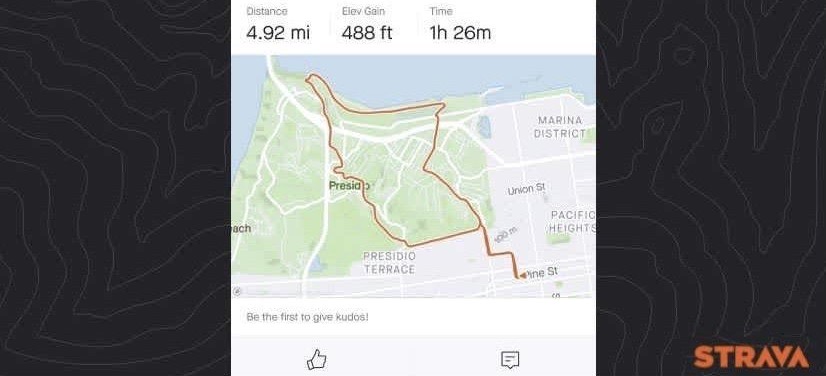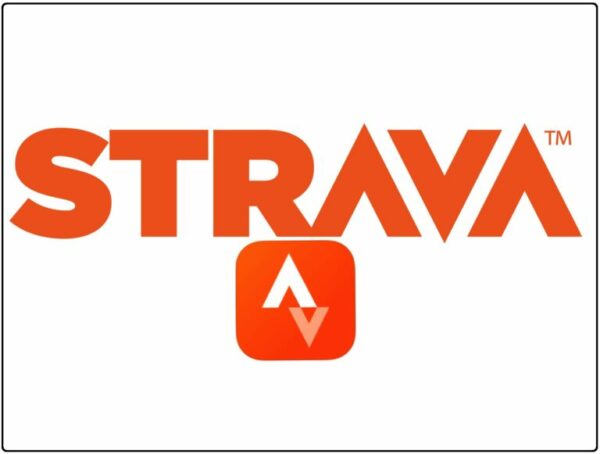I chose to look into Strava’s policies surrounding privacy, data collection, and data distribution as I have been using it more frequently, especially since I’ve been biking to and from my home for my commute. Strava is a physical activity-based social networking platform that is “designed for and created by athletes” but really it can be used by just about anyone who’s interested in getting active. Strava is an app that has location tracking, followers, messaging, photos and other personal information. My question is, if Strava collects all this data about where we’re going and what we’re doing, then what does it use that information for and where does it all go?
In general any app user’s profile can be set so that everyone can see it or just the followers that they’ve accepted. However, if you do restrict your profile to followers only, then you will not be able to participate in monthly achievements and challenges.
Aggregated Data: Strava does not sell personal information but does sell aggregate data. Aggregated Data is information that has been gathered and summarized for statistical analysis. This data is de-identified and used by urban planners, advocacy groups and research institutions to build safer urban areas for pedestrians and cyclists.
As a cyclist myself, I find this really interesting and supportive. I’ve never thought of how or where the information for new bike lanes came from. There are now multiple ‘bike highways’ in and around my home and it makes me wonder where that information came from, if Strava was a source of information, and if my data helped contribute to the new routes. This data additionally supports communities by letting others know possible areas to be active (i.e. trails to run/hike). On the flip side it does sell aggregated data to third party ‘partners’ to help them understand the demographics, services and products that are in demand within a particular area.
You do have the option for your data to be used. It is super easy to opt out of aggregated data collection in the app. You can go to your privacy settings, aggregate data, and select to option to not have your information used. Personally, I chose to keep mine on for now.
Map Visibility: This is a fantastic feature in the app! In your settings, under Map Visibility, you can decide how much of your activity is hidden from start and finish (i.e if you left from your house or place of work). When this feature came out I was extremely happy. Having people see my start and finish was something I was very aware of. I would sacrifice a block or two from my tracker because I didn’t want it to show my start/finish and doing so would interrupt my activity. If I were running, and had the app going, I would slow to a walk in order to ‘finish’ my activity and then would be somewhat less motivated to really push it for the last few blocks.
You can also add a “Privacy Zone” which requires you to put in the address that you’d like to shield. Although this information is collected, it does not get shared or sold just like the rest of your personal information.
Finally, you have the option to hide all maps. This means that no one, including your followers, can see where you went. However, it will still track and collect it if the aggregated data is on.
Recently, Strava made it possible to easily change the privacy settings on past activities. You would want to do this if you had, say, used the app before these features became available and weren’t comfortable with your map being shared.

Third Parties: Now this one probably surprised me more than it should have. There are third parties that Strava allows to run monthly challenges. If you participate in these third party challenges they have access to your information and what they do with it is within their own set of policies. The third party can use your information however they like. Your information is shared with your consent but the catch is that by participating in the challenge you are giving your consent. Learning this will definitely make me think twice as to what I’m participating in, what data is being used, and how it is being used.
Takeaways: Strava seems to be transparent in its policies. I found everything very open and straight forward about what information was collected and what it was used for. One thing that I appreciate about the app is that when there is a policy update it does not get sent out in a long document of legal jargon that no one likes to read. Strava summarizes the information so that it’s clear and precise. It gives you the option to do any additional reading by linking the summary to that long document.
After reading through the privacy policies and data sharing policies, I will still use Strava pretty similarly to how I used it before with one change. Previously, my go to was to lock down everything just because I wasn’t comfortable with my information being shared. However, by learning how Strava uses the data it collects I feel more confident in the app than I did before and even consented to having more of my data available.




